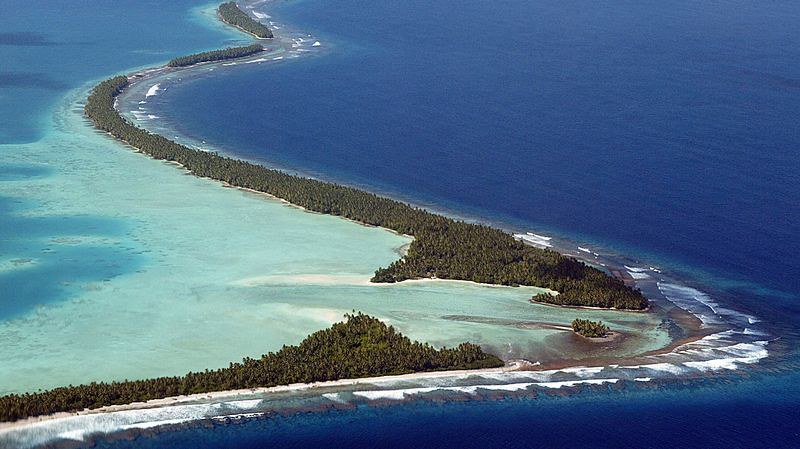
Picture: Tuvalu
Global sea-level has been rising over the past century. Today, small islands such as Tuvalu, located in the west-central Pacific Ocean, composed of nine coral islands and Maldives, situated at the Arabian Sea of the Indian Ocean are called the “sinking island” because of the rise in sea level that disturbs the habitat of the people. The natural rise in sea level is not supposed to make these islands vulnerable at this rate yet, at the least in the 21st century, however, global warming-induced by human activity (also called ‘Anthropocene’) force glaciers and icecaps in the Antarctic and Greenland melts faster than anticipated which cause a rapid rise in the sea-level impacting many populations in the low-lying areas and intruding aquatic ecosystem. There is a certain level up to which we can adapt to sea-level rise and its adverse impact, we need full effort to cut down our emission rate, as it is the main cause of climate change and variability which have a further impact like sea-level rise.
What cause sea-level to rise?
We have seen and heard several times of the word ‘global warming’ and ‘greenhouse gas’, as a reminder, the concentration of harmful gases (called ‘greenhouse gas’) such as carbon dioxide (CO2), methane (CH4) and nitrous oxide (N2O) increases the earth’s temperature (global warming). The concentration of such gases is aggravated by human activity through agriculture, livestock, choice of food, use of fossil fuels, growing population, lifestyle, and many more which rapidly increase the gas concentration, the higher the concentration is the faster the rise in global temperature. This increase in temperature causes thermal expansion, increasing the melting of glaciers and ice sheets from the Antarctic and Greenland and as the water warms up, it expands and takes more space causing a rise in the water level. The ocean is covering 363 million square km, equivalent to approximately 72% of the earth’s surface and the rise in water level at a high rate can do no good to human beings and other living organisms.
What is the impact of sea-level rise?
The population in the coastal areas are vulnerable and highly exposed to climate change and its impact, in particular, sea-level rise. It induces inundation which destroys properties, agricultural land, causing resource scarcity and can further lead to conflict between an individual, community, or society and forced displacement. Besides flooding, it causes soil salination, decreasing agricultural products or reducing their nutrition content which can further lead to food insecurity, poverty, and malnutrition, it also contaminates our water sources making it unsafe for drinking, it also can affect the economy of the coastal areas where many people use tourism as their livelihoods.
It also impacts aquatic organisms such as coral reefs, seagrass meadows, kelp beds which are essential for marine animals such as fishes, sea creatures, and mammals, where they find their shelter and habitat. Deterioration of aquatic organisms is not only harmful to sea animals but also for humans; decline aquatic organisms affect sea animals, declining sea animals affect humans as many coastal inhabitants use fishing as their livelihoods.
Sea-level rise and migration
According to the United Nations 2017, more than 600 million people, which is around 10% of the world’s population live in the coastal areas that are less than 10 meters above the sea level. Nearly 2.4 billion people, which is about 40% of the world’s population is living within 100 km of the coast. If the sea continues to rise at this rate (0.1 inches per year in the 1990s to 0.13 inch per year today), soon, many of the people on the coast especially those residing at a very low-lying area will be forced to leave causing mass migration. Mass migration can be harmful to the host country, with the increasing population growth, there will be a limit in the number of migrants a country can hold in association with services, education, job opportunities, and settlement. This can increase inequality in different sectors and pose a threat to conflict, shifting our state of stability to instability.
I hope this brief blog post leaves each one of us with a question; What is my role, responsibility and what can I contribute? and find our way to save our planet and support the less fortunate.